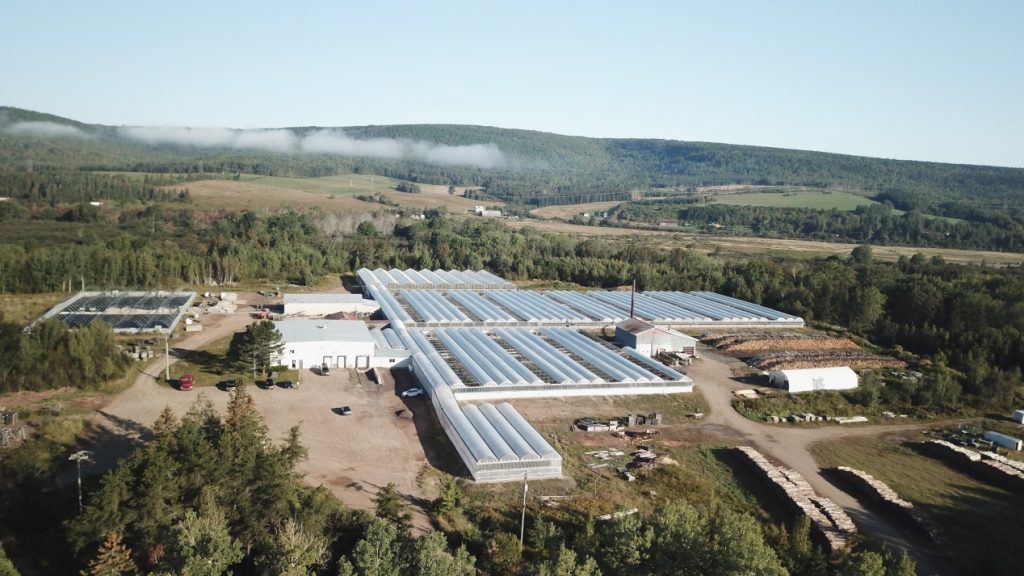Geothermal Potential for Sussex Region Powerful
SUSSEX – An exhaustive study into the flooded depths of the decommissioned potash mine in Penobsquis has revealed an exciting opportunity to produce geothermal energy for the Sussex area.
It’s been three years in the making, a process necessary to uncover the true viability of developing a lower cost, carbon-friendly heating and cooling source that has the potential to grow a region recovering from the loss of its potash mining activity, says Bill Thompson. Thompson was the economic development officer hired on for two years in 2016 through provincial and federal funding to help community leaders identify new opportunities. It was at a time when the Sussex region was attempting to regain its footing after the harsh news that the Potash Corporation of Saskatchewan (PotashCorp) was suspending operations and sending hundreds of high-paid staff and contract workers home.
“This is great news for the Sussex area,” Thompson said of the report’s recent findings. He continues to support the town through the last legs of the study phase as a volunteer. “I salute the Town of Sussex for continuing this process until all the answers are known even though the project itself is not inside the town,” he said. “This is certainly about the bigger picture.”
In hatching a plan for the future, among the community’s priorities was a comprehensive feasibility study of whether the brine-filled potash mine workings in Penobsquis were capable of turning the region’s bad news story around by becoming a positive resource again.
“Everyone rolled up their sleeves and looked at all our potential and all our strengths as a region,” Sussex’s Chief Administrative Officer Scott Hatcher explained. “Geothermal stood out, and people wanted to know if this was just a pie-in-the-sky type dream or is it really possible to develop a new, large-scale opportunity to help replace what we had lost. Would we really be able to tap the resource of a flooded mine, extract heating and cooling in some fashion and translate that into an economic development opportunity?”
The study concludes the potential is very real, and would take an investment of about $14.4 million. With the savings in heating and cooling costs, it could pay for itself in just under 10 years.
The Town of Sussex, because of its municipal structure and resources, facilitated the $110,000 study funded by ACOA at the federal level, and RDC provincially. “The results of this study have been three years in the making but it was the time needed to give us the answers we needed,” Mayor Marc Thorne said. “It’s important that the community knows the town started this process on behalf of the greater community in an attempt to find a way to create a stronger economy for everyone in the region following the mine closure. We always knew the benefits of a stronger economy anywhere in the region would impact everyone.
“We know the potential for geothermal energy is there, and it’s also important to note that this opportunity is not just restricted to the former mine site itself but travels east along Route 114 for about seven kilometres.”
A lot of hopes for a real opportunity for the region have been validated with the release of the final report penned by Wood Environment & Infrastructure Solutions of Fredericton, Hatcher explained.
“In 2016 the people of this region attacked a difficult problem and the opportunities that came from that have to be assessed to the fullest. That will mean a better future for everyone,” he said.
“We now know the cost of geothermal and we know the payback. Now we are in active discussions to secure a partner to analyze what the optimum industries are that could maximize the benefit of this affordable energy opportunity,” he added. “We want to take this to the point where there are no more unknowns. At that point the town will feel it has done what it committed to in 2016.”
The Town of Sussex as a municipality never intended to get into the energy business, but its council hopes to hand the opportunity off to an individual or group that is, Hatcher explained.
There are two different approaches to capitalizing on the geothermal system, he pointed out. One would be to set up a not-for-profit governance model like a new geothermal energy commission or utility board to run it, or there’s potential for a large, single user to be interested in making the investment, he said.
The geothermal analysis was done in two parts. The initial technical feasibility study in 2017 and 2018 collected local data from PotashCorp including ground temperatures, water levels and mineral composition of the brine. The second phase of the study validating that data relied on more detailed samples taken from the mine site in May of this year once the mine cavity was fully flooded. The brine had a greater mineral composition and was colder than first expected, the report shows, but those details can be managed.
After modelling 20 geothermal scenarios, Vernon Banks, senior hydrogeologist and project manager with Wood Environment & Infrastructure Solutions, determined an open loop system has the most potential. In that process water would be pumped to the surface, run through heat pumps to generate heating and cooling power, and then return below ground after use. The cost savings would be between 40-60 per cent, Thompson pointed out, which in businesses like hatcheries or those that run greenhouses for everything from cannabis to hot house tomatoes, the savings translates into big money.

At Avon Valley Floral in Penobsquis, for example, it burns 2,000 cord of hardwood logs a year to heat its four and a half acres of greenhouses. The business, located close to the mine workings, participated in the study.

In the coming months specific information identifying potential users will be collected. “Now that we have an idea of the true capital costs, we want to identify key sectors to attract to the area that would benefit most from much lower heating and cooling costs,” Thompson said.
For two decades the mine battled a brine inflow problem and tackled the costly issue by hauling it away by truck and pipeline. In 2007 when PotashCorp, now Nutrien, announced it would construct a new $2 billion potash mine across the road in Picadilly, it was a way of abandoning the water problems the Penobsquis side was experiencing while securing optimism in the community that potash mining’s future was bright in the Sussex region.
When 2016 began, however, the planned decommissioning of the old site that had been mined for 35 years paled in comparison to the news that the potash company would be closing its new Picadilly site and putting out of work about 400 of its own staff and hundreds of contract workers.
In quick response to the loss of jobs and the major hit the economy would face when earnings were no longer there to benefit spin-off jobs and businesses, the region’s business and political leaders, led by the Sussex and District Chamber of Commerce, rallied to find innovative ways to reinvent the economy. From those conversations the geothermal vision was born.
For more information contact Scott Hatcher, Chief Administrative Officer for the Town of Sussex at 432-4540.
